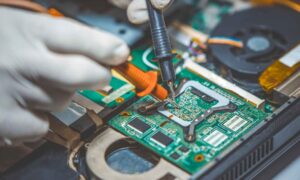Have you ever wondered how your favorite animated movies and video games come to life? Join us on a journey from concept to completion as we explore the fascinating world of 3D animation. Get ready to dive into the creative process, technical wizardry, and artistic vision that bring characters and worlds to vivid, vibrant existence.
Introduction
In recent years, 3D animation has become a dominant force in the entertainment industry. From blockbuster movies to popular TV shows and even video games, 3D animation has revolutionized the way stories are told and characters are brought to life. But what exactly is 3D animation, and how did it become such an integral part of the entertainment world? In this section, we will explore the history and evolution of 3D animation, its impact on the industry, and why it continues to be a preferred method for creating immersive visual experiences.
The Origins of 3D Animation
While traditional forms of animation have been around since the early days of cinema, it wasn’t until the late 20th century that advancements in technology allowed for the creation of 3D animated films. The first feature-length film to utilize computer-generated imagery (CGI) was Pixar’s “Toy Story” in 1995. This breakthrough film marked a significant shift from hand-drawn animations to digital techniques, setting a new standard for visual storytelling.
What is 3D animation?
3D animation is a specialized field of computer graphics that involves creating moving images in three-dimensional space. It is an intricate process that requires both technical and artistic skills, as well as a deep understanding of animation principles. In this section, we will delve into the fundamentals of 3D animation, including its definition, techniques, and applications.
At its core, 3D animation refers to the process of generating imagery using computer software. Unlike traditional 2D animation, which creates movement by drawing sequential frames on paper or digitally, 3D animation involves manipulating digital models in a virtual environment to create lifelike movements and animations. These models are typically built from scratch using specialized software such as Autodesk Maya or Blender.
One of the key elements that sets 3D animation apart from other forms of animation is its use of three-dimensional space. This means that objects can move and interact with each other in a more realistic manner, making it ideal for creating dynamic and immersive visuals. To achieve this realism, animators utilize various techniques, such as rigging (the process of creating skeletons for characters), texturing (applying surface details to objects), and lighting (creating realistic lighting effects).
The Process of 3D Animation
3D animation is a complex and intricate process that involves creating lifelike and dynamic digital characters and environments. From blockbuster movies to video games, 3D animation has become an integral part of the entertainment industry. But have you ever wondered how these incredible visuals are brought to life? In this section, we will take a closer look at the process of 3D animation, from concept to completion.
Step 1: Concept Development
The first step in any 3D animation project is developing a concept or idea. This could be anything from a character design to an entire world. The concept development phase involves brainstorming ideas, sketching out rough drawings, and creating storyboards to visualize the final product.
Step 2: Modeling
Once the concept is finalized, the next step is modeling. This involves creating a three-dimensional model of each element in the scene using specialized software such as Maya or ZBrush. Modelers use polygons to create basic shapes that are then refined into detailed and realistic objects.
Step 3: Rigging
Rigging is like giving digital puppets their bones and muscles. It involves attaching a virtual skeleton to each model so that it can be manipulated and move realistically. The rigging process requires careful planning and attention to detail, as it determines how flexible and articulated the characters will be in later stages.
Step 4: Texturing
Texturing brings life-like details to models by adding colors, textures, and materials to their surfaces. Artists use various techniques, such as bump mapping, displacement mapping, and UV mapping, to create realistic textures on different surfaces, such as skin, fur, or metal.
Step 5: Animation
Animation is where things start coming together! Animators use keyframe animation or motion capture technology to bring characters to life by defining their movements frame by frame. They also work on facial expressions for lip-syncing with dialogue and other movements to make the characters appear more lifelike.
Step 6: Lighting and Rendering
Lighting plays a crucial role in setting the mood and atmosphere of a scene. Artists use specialized software to create virtual lights that mimic real-life lighting scenarios, giving the final image depth and realism. Once the lighting is set up, rendering comes into play, which involves taking all the elements—models, textures, animation, and lighting—and combining them into a single frame.
Step 7: Post-Production
The final step in the process is post-production. This includes adding special effects, sound effects, music, and composing different layers together to create a cohesive final product.
Creating 3D animation requires time, skill, and attention to detail. Every step of the process is essential to bringing digital worlds to life. From concept development to post-production, each stage contributes to creating visually stunning animations that captivate audiences worldwide.
Conclusion
3D animation is a constantly evolving art form that requires both technical skills and creativity. It has the power to transport audiences to new worlds and tell stories in ways that were once unimaginable. As technology continues to advance, we can only imagine the possibilities for 3D animation in the future. Whether it’s for entertainment, education, or any other industry, 3D animation will continue to amaze and inspire viewers with its endless potential. We hope this article has provided insight into the fascinating world of 3D animation and sparked your curiosity to learn more about this dynamic art form.



































